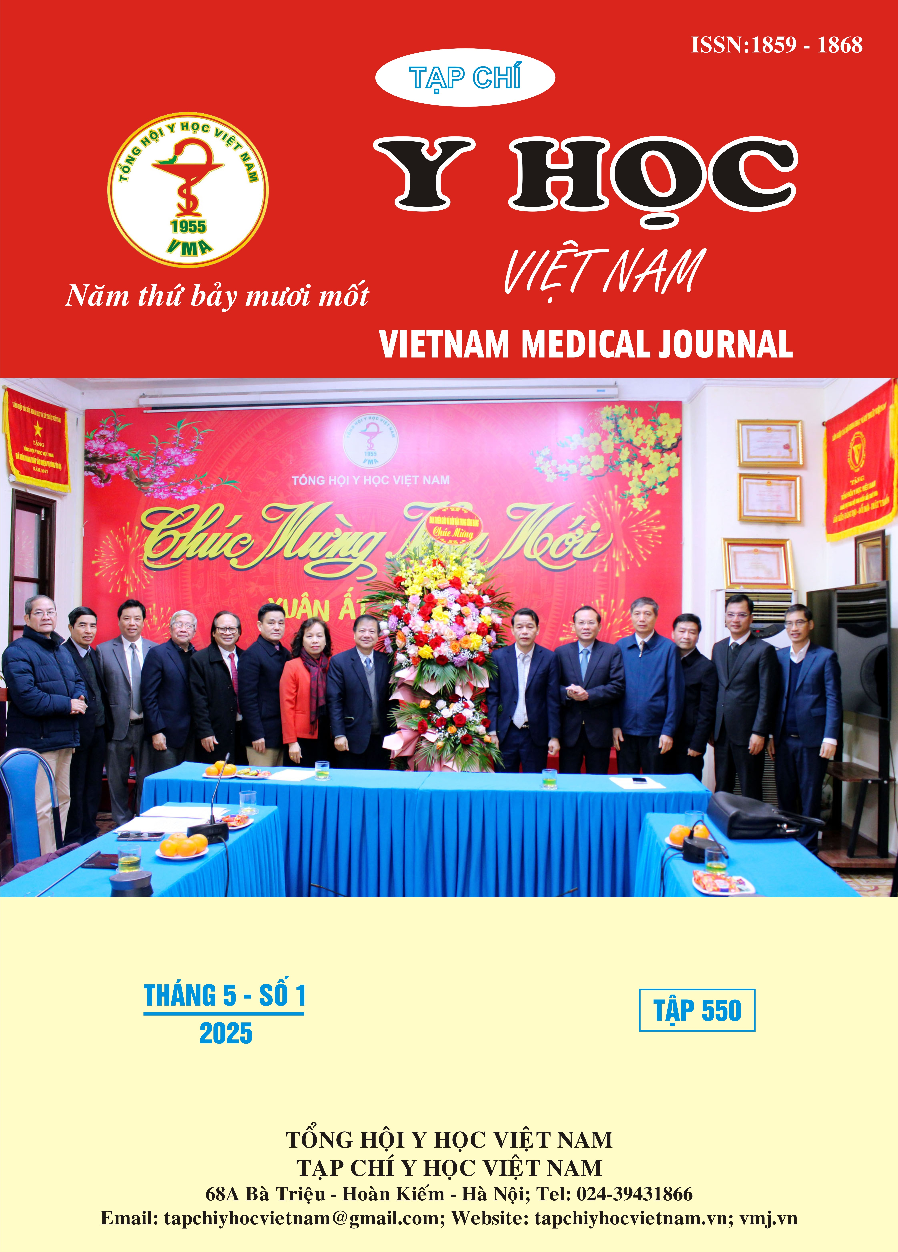CERVICAL MORPHOLOGY AND LENGTH, ASSOCIATED FACTORS AT CAN THO OBSTETRICS AND GYNECOLOGY HOSPITAL IN 2023 – 2024
Main Article Content
Abstract
Background: Preterm birth is currently a global issue and the most significant cause of neonatal mortality. Known risk factors for preterm birth include a history of preterm delivery, cervical insufficiency, short cervical length, and uterine overdistension, among others. Among these, a short cervical length and abnormal cervical morphology are considered some of the greatest risk factors for preterm birth. Objective: To investigate the morphological characteristics, cervical length, and related factors in singleton pregnant women at 14–20 weeks of gestation at Can Tho City Obstetrics and Gynecology Hospital during the 2023–2024 period. Subjects and Methods: A cross-sectional descriptive study was conducted on 800 singleton pregnant women at 14–20 weeks of gestation who underwent transvaginal ultrasound measurement of cervical length at Can Tho City Obstetrics and Gynecology Hospital. Results: The mean cervical length was 34.6 ± 5.3 mm, with no significant difference in cervical length across gestational ages. A short cervical length was observed in 3.1% (25 women), and abnormal cervical morphology was found in 0.75% (6 women). Factors such as a history of preterm birth, a history of short cervical length, and a history of cervical insufficiency significantly influenced cervical length and morphology. Conclusion: The mean cervical length was 34.6 ± 5.3 mm. The rates of pregnant women with abnormal cervical morphology and short cervical length were 0.75% and 3.1%, respectively. Factors including a history of preterm birth, a history of short cervical length, and a history of cervical insufficiency significantly affected cervical length and morphology.
Article Details
Keywords
Preterm birth, cervical length, cervical morphology
References
2. Vũ Bá Quyết và cộng sự. Khảo sát độ dài cổ tử cung ở 3500 thai phụ có tuổi thai từ 19 – 23 tuần 6 ngày bằng siêu âm qua đường âm đạo. Tạp chí Y học Việt Nam. 2021; 501(1).
3. Kiattisak Kongwattanakul, Piyamas Saksiriwuttho, Ratana Komwilaisak, Pisake Lumbiganon. Short cervix detection in pregnant women by transabdominal sonography with post-void technique. J Med Ultrason (2001). 2016; 43(4):519-22. DOI: 10.1007/s10396-016-0735-8
4. Miller ES, Tita AT, Grobman WA. Second-trimester cervical length screening among asymptomatic women: an evaluation of risk-based strategies. Obstet Gynecol. 2015; 126, pp.61e6. DOI: 10.1097/AOG.0000000000000864
5. Owen J, Hankins G, Iams JD, et al. Multicenter randomized trial of cerclage for preterm birth prevention in high-risk women with shortened midtrimester cervical length. Am J Obstet Gynecol. 2009; 201, pp. 375.e1. DOI: 10.1016/j.ajog.2009.08.015
6. Perin J and et al. Global, regional, and national causes of under-5 mortality in 2000-19: an updated systematic analysis with implications for the Sustainable Development Goals. Lancet Child Adolesc Health. 2022; 6(2), pp.106-15. DOI: 10.1016/S2352-4642(21)00311-4
7. Wang Y, Ding J, Xu HM. The predictive of cervical length during the second trimester for non-medically induced preterm birth. International Journal of General of Medicine. 2021;14, pp. 3281-3285. DOI: 10.2147/IJGM. S311390
8. World Health Organization. Preterm Birth. 2018.


